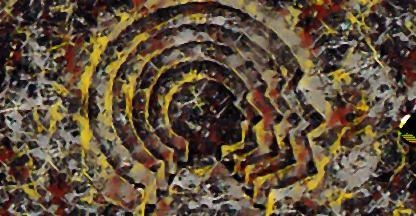Dimitris Magriplis, Psychiatrist of children and adolescents, Systemic Psychotherapist of Couples and Family
Panagiota Georgoni, Social worker (Msc), of Chalandri-Agia Paraskevi Community Mental Health Center
Abstract
In the context of the successive crises of Greek society, the family is presented with progressively greater challenges, and the public mental health services for children and adolescents must offer therapeutic help. Given the problems of understaffing and underfunding, in the absence of a sufficient number of family clinics, therapeutic interventions through the prism of the systemic perspective seems to be a fairly good alternative. A necessary condition is the utilization of synergies, the networking of the existing structures, and the strengthening of the social state.
The 21st century could be considered as the century of crises. Crisis upon crisis, like the economic crisis, the health crisis, the energy crisis, the inflationary crisis, etc. The effects of crises at an individual and a collective level are varied: insecurity, changes in family income, changes in the lifestyle, social withdrawal or distancing, introversion, changes in family relationships, reorganization of everyday life and communication with others, “remote-life” and mental trauma.
The duration and the continuity of successive crises create, through individual and collective fantasies, the fear of annihilation and death, generate persecutory anxiety, cause “relational alteration” in social groups, and in some cases, paranoid processing of the threat.
Family, as an intermediary system between the individuals and the community, absorbs vibrations during the period of crises. Family relationships, under constant crises, are modified at the level of communication, behaviors, expression of feelings, and beliefs. Variables or characteristics of the family system that make a difference in the family constellation and that are affected are: the structure of the family, its lifecycle, its socioeconomic status, the health status of its members, previous experiences, etc. At the same time, conditions of upbringing, education, and daily activities are formed in a different way, especially in families with young children, who are more vulnerable. In families with adolescents and young adults, “things become even more difficult”, because, on the one hand, the perception of risk in these age groups is different from that of an adult, and on the other hand the desired freedom for self-management vanishes.
In the experience of the child psychiatry department of Chalandri-Agia Paraskevi Community Mental Health Center, it is observed that there is a continuous increase in requests for evaluation of children exhibiting the following symptoms:
- Anxiety disorder (generalized anxiety disorder, panic disorder, separation anxiety, etc.)
- Emotional disorders with or without self-destructive behavior (depression, dysthymia)
- Self-harm and Intermittent explosive behavior
- Aggression and disruptive behavior within the family or school
- School refusal and maladjustment in school
- Social reintegration difficulties (withdrawal, isolation, etc.)
- Internet addiction
- Drug use
- Difficulties in the developmental achievements of adolescence
According to the systemic family model viewpoint, these symptoms symbolize a maladaptive behavior/response of the family in crisis. An example of this is the case of a family that came to the Chalandri-Agia Paraskevi CMHC with a request for an evaluation and treatment of X., a fifteen-year-old adolescent girl.
The family consists of four members:
- The father, 51 years old, self-employed (who has shut down his profitable company since 2012 and faces financial difficulties), and is struggling with health issues (diabetes, high blood pressure, stomach ulcer)
- The mother, 48 years old, who was recently made redundant and faces health issues (breast and lung cancer)
- The daughter “X”, 15 years old, high school student, athlete with very good performances, diagnosed with special learning difficulties (dyslexia) and generalized anxiety disorder,
- The son, 7 years old, a primary school student.
The family had already received help from other support centers, such as the Center for Interdisciplinary Evaluation, Counselling & Support for X`s learning difficulties, Sismanoglio Hospital, where they had therapy sessions for 1 year, for bullying against X, and the Municipal-Community Clinic of the Municipality of their place of residence.
Additionally, the family`s main backup remains the paternal grandmother, who recently returned to her home after a stay of 1.5 years with the family, due to the mother`s health problems.
According to her parents, X exhibited extreme behavior, aggression towards family members and especially towards her father, and began to self-harm. At the same time, the parents read some texts on her mobile phone, according to which she identified as homosexual and also declared her intention to end her life. Furthermore, they noticed excessive jealousy towards her brother.
The family’s difficulties started and culminated in conditions where the Greek society was in crisis. The family came to the Chalandri-Agia Paraskevi CMHC near the end of the economic crisis that affected the father`s business that had not yet recovered, and at the beginning of the health crisis, in a state of confinement due to the Covid-19 pandemic. Moreover, the family was negatively affected by the recent layoff of the mother, and the formation of a hostile environment in X`s school.
An assessment was carried out, and the treatment proposal was for: a) individual psychotherapy for X to reduce symptomatology and manage her behavior (which hinted towards a temporary diagnosis of borderline personality disorder) as well as issues related to the developmental phase she was in, b) systemic family therapy, for the facilitation of environmental changes, through observation of the interactive relationship of family members, and focused therapeutic intervention.
Themes that emerged during the collaboration with the family were:
I. The father`s feelings of depression, guilt, and self-blame due to the violent upheaval of the family`s previous lifestyle
II. The mother`s distancing from and weakening of her maternal and conjugal role, following her health problems
III. The alliances between father and daughter and mother and son
IV. The distortion of roles (the father taking on the role of a mother and the daughter that of a wife)
V. The problems between the couple (which despite appearing as a mutually complementary couple, were in actuality a competitive couple)
VI. Issues of closeness, distance, deregulated relationships
VII. Communication problems (double messages) and problems in emotional expression
VIII. The absence or abolition of boundaries
IX. Parental bonding issues and finally
X. The balancing and simultaneously undermining role of the grandmother (with the dipole of her being the perfectly good grandmother and the evil mother that always says “no”).
The interventions aimed at:
-
Strengthening the paternal role (in order for the father to find a job and set boundaries)
-
Empowerment of the mother in her maternal role (attachment) and in assuming responsibilities
-
Updating rules and boundaries
-
Strengthening parental alliance and determination
-
Facilitating the emotional expression of the family`s members and redefining the traumatic experiences as battles that lead to resilience
-
Modifying the narrative of misfortune, bad luck and bemoaning.
Ultimately, the family managed to make the following changes:
-
The father moved on to a new business venture and even though it did not go well (due to the energy crisis and the war in Ukraine, which affected his line of work), he said that he felt strong enough to fall but get back on his feet as many times as it is necessary.
-
The mother opened up to the children, took responsibilities (relieving her husband) and comprehended that she had been an abusive mother, repeating her own mother`s model.
-
“X” recognized that her parents still love her, even when they set limits, and abandoned “the black or white” perspective. She also turned towards her peers, viewing the external environment as less hostile
-
They all felt stronger to face any new difficulty that could arise.
-
Family resilience was strengthened.
In direct correlation with families in crisis, in the context of successive social crises, issues of therapeutic centers and institutions also emerge. Mental Health Centers are, according to the systemic perspective, the closest public mental health service to the citizens. Thus, it is crucial that they take an active role in the creation of networks in the cities with the aim of strengthening synergies and establishing collaboration protocols with the existing community services (such as schools, Centers for Interdisciplinary Evaluation, Counselling & Support, social services, social rehabilitation clinics, health centers, clinics, etc.) with the ultimate goal being the improvement of the mental health services provided.
As far as therapeutic centers are concerned, there is an urgent need of integrating family clinics in community mental health centers, for a better response to requests with an indication of a systemic type intervention. A basic condition for their proper functioning is the “two way evolutionary feedback” between the various structures (General hospital, Community Mental Health Center, child psychiatric department, and family clinic). Also, the interactive interaction of the therapeutic system with the rest of the systems, inside and outside of the institution is necessary.
A family clinic in a public institution requires specific specifications in order to function properly, such as the recording and assessment of needs, spatial and logistical infrastructure, staffing, special training, and supervision.
However, often, obstacles such as underfunding and understaffing of mental health organizations, and social determinants (unemployment, poverty) as well as issues of access and time (i.e. access difficulties for the citizens of the most remote municipalities of the sector or lack of available appointments in the evening, or capability for long term treatments) are decisive for receiving help as well as for the effectiveness of any psychotherapeutic intervention.
Basic recourses of people working in mental health institutions are the vision and effort for new initiatives, and the will to cooperate and utilize every available recourse such as the framework systems (i.e. the interdisciplinary team, when necessary, can proceed in further evaluation of the child, or the adult department can assist with the psychiatric assessment of an adult). Furthermore, building networks in the community, with the ultimate goal of improving the provided mental health services, is very important.
Mental health is directly related to physical health and the living conditions of individuals in terms of meeting basic needs. According to research, successive crises lead to social inequalities and hinder the access to health services.
The state can play an important role by:
-
showing its social face and covering basic needs (related to poverty, unemployment, housing) of the general population, but also for the most vulnerable groups
-
investing funds in the field of public health (human and material recourses)
-
social policy making and social planning programs (e.g. Mental health prevention programs, included in detailed programs of actions and lessons of schools or Early Crisis Intervention programs)
-
strengthening actions and creating new facilities oriented towards community psychosocial interventions.
The strengthening of the social state, and the perception of synergies and networks within the community that is taking shape, are the main pillars for the improvement of provided mental health services, at a time when crises are the norm rather than the exception.


